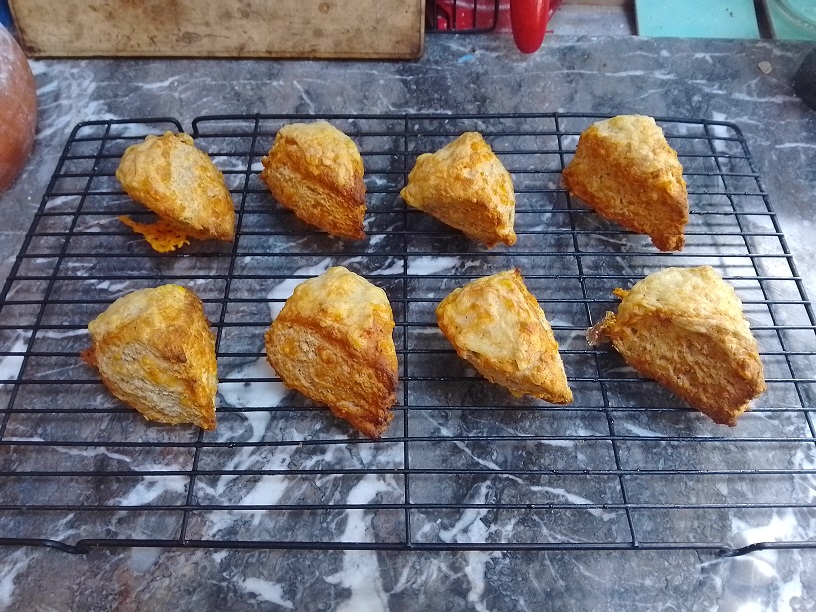
In my opinion, cheese scones are probably the easiest thing to bake—there is little in the way of technique involved, and they're in and out of the oven in a very short amount of time. Here’s a recipe which can be customised for any hard cheese.

You want a low-gluten flour with scones, to avoid a chewy texture—here in the UK, I use plain flour, which usually has a gluten level somewhere between 8% and 10%—you can check the level by looking at the protein content in the nutritional information, for my white plain flour specifically, it has 9.4g of protein per 100g, meaning it has 9.4% gluten.
The total weight of flour should be 250g, but as you can see here, I’ve cut this with wholemeal plain flour as well, at a 1:1 ratio. While this would usually be considered undesirable for sweet scones, the wholemeal flour complements the flavour of most cheeses very nicely. If you can’t get wholemeal plain flour (it can sometimes be tricky to find in shops) just use all white.
You want a hard, grateable cheese, or a crumbly one—not a gooey cheese like camembert or brie. This is because the cheese is taking the place of butter, and so it needs to have both a high fat content and the right texture—some recipes use a mixture of butter and cheese to serve as the dough’s fat, but since cheese is the star of the show here, it makes sense to only use cheese. Hard cheeses like cheddar have about half the fat content of butter, meaning when replacing butter in recipes with cheese, you should use double the amount of cheese as you do butter.
A third of the cheese here is to be placed on top of the scones, which adds extra flavour and an interesting texture to the crust. As has already been mentioned, you can use any hard cheese—cheddar is a classic, but you could use an Alpine type cheese like gruyere or comte, a crumbly blue cheese like stilton, or something like red leicester or cheshire. I like blue cheese scones in particular—stilton scones are my favourite.
It doesn’t really matter what type of milk, I usually use semi-skimmed or full-fat.
Make sure it’s in date! Baking powder does in fact go off—there’s nothing more disappointing than a scone or cake failing to rise.
I find dry mustard powder adds a little depth of flavour to the scones, and mustard pairs very nicely with cheese. I don’t know how easy dry mustard powder is to get outside of the UK—here it comes in small yellow tins. You can leave it out if you can’t get it or don’t like it.
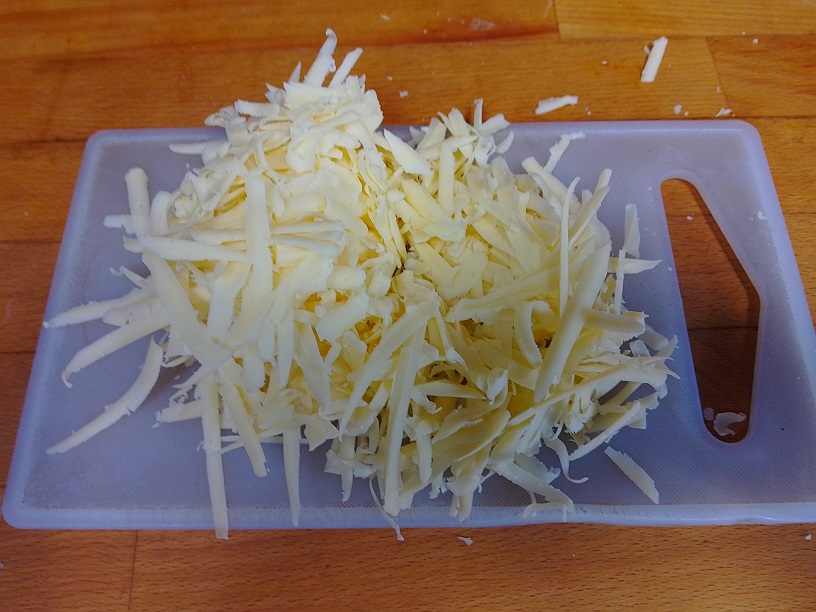
Simply grate all the cheese. I grated it quite coarsely here, which was fine, but usually I’d grate it more finely—so I’d recommend using the finest grater you have. Set aside a third of the cheese, to be used for the topping.
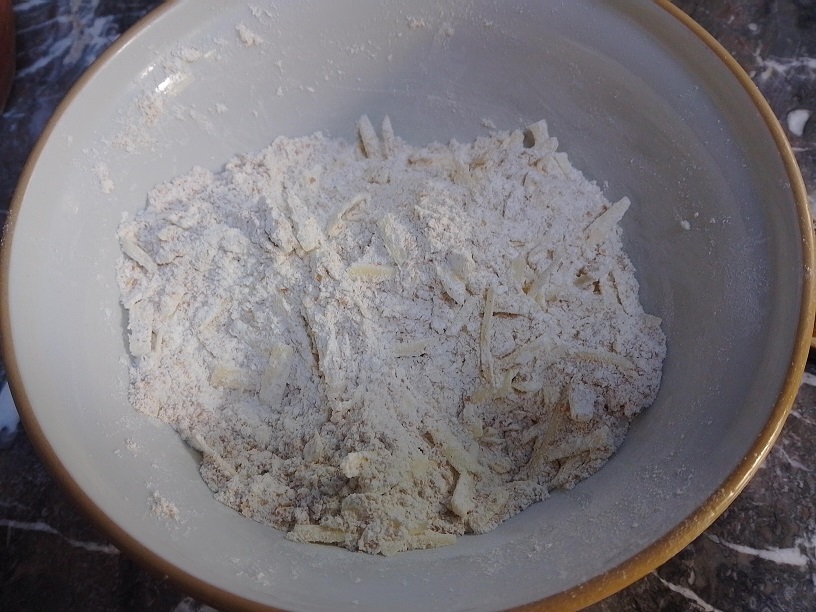
This is basically the equivalent of rubbing the butter into the flour in a normal scone recipe. Just make sure the cheese is evenly distributed and well coated in the flour mixture.
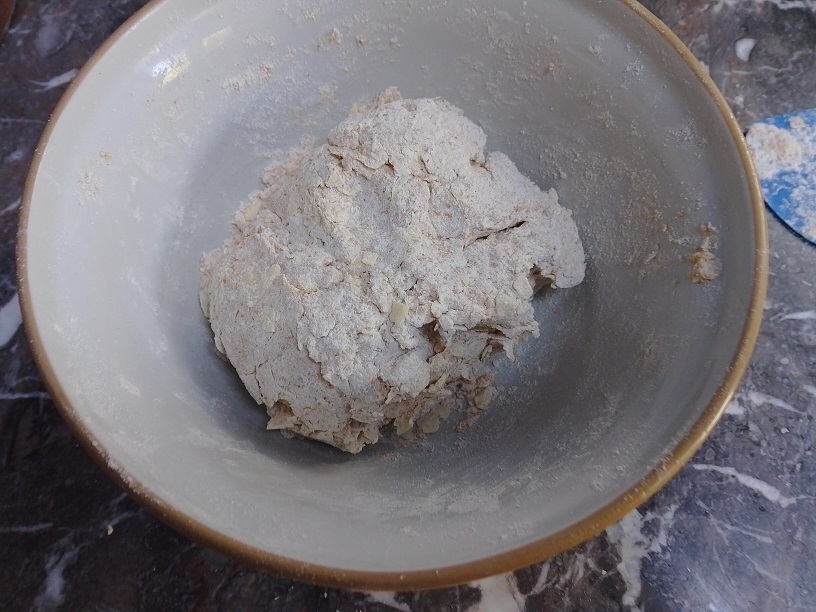
The dough might seem very dry at first—don’t worry, it takes a little while for the flour to properly absorb the liquid. Just gently squish the dough together until it forms a dough.
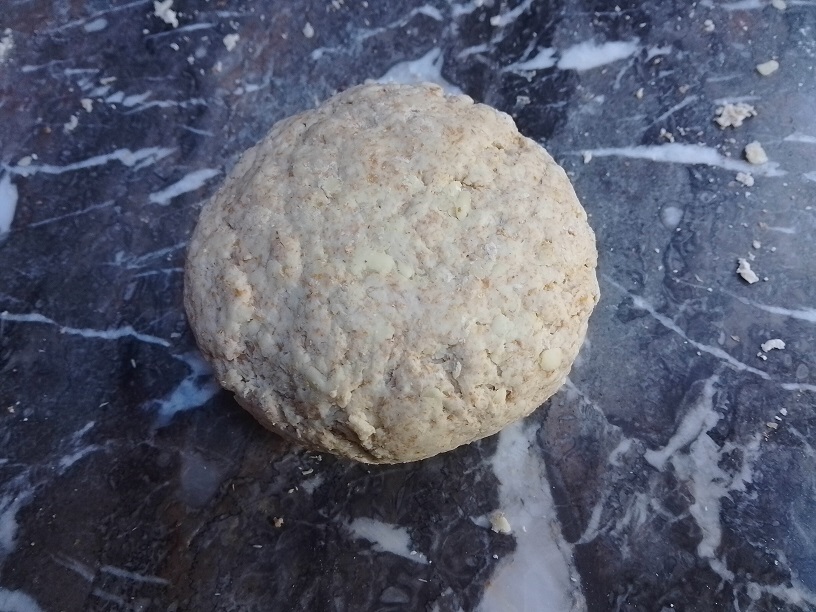
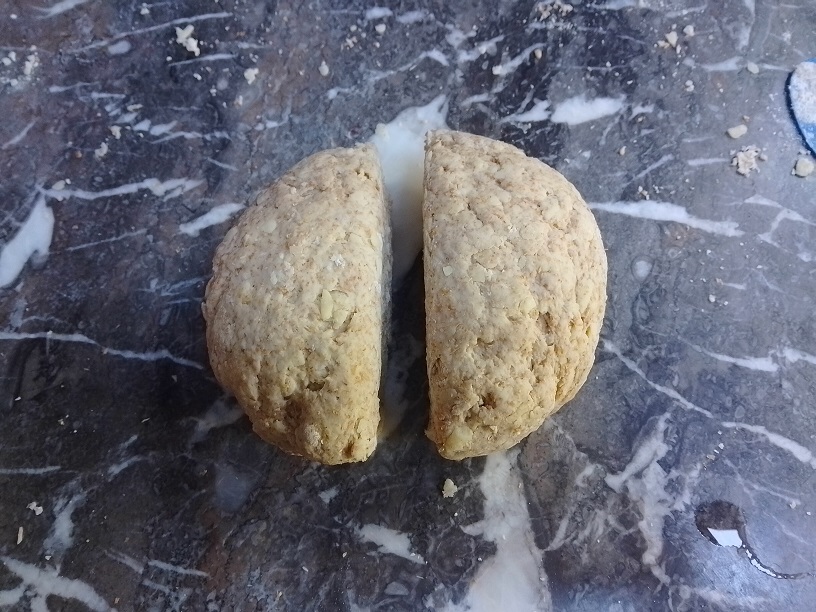
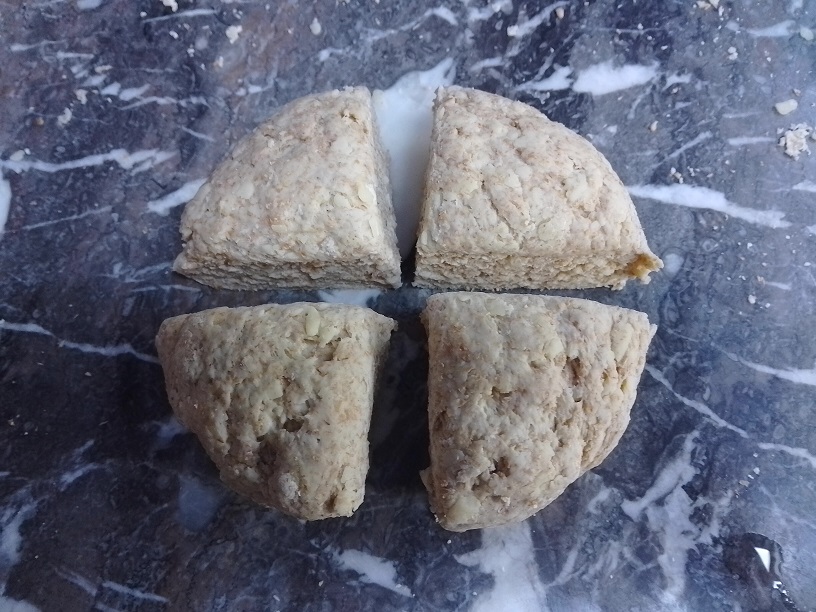
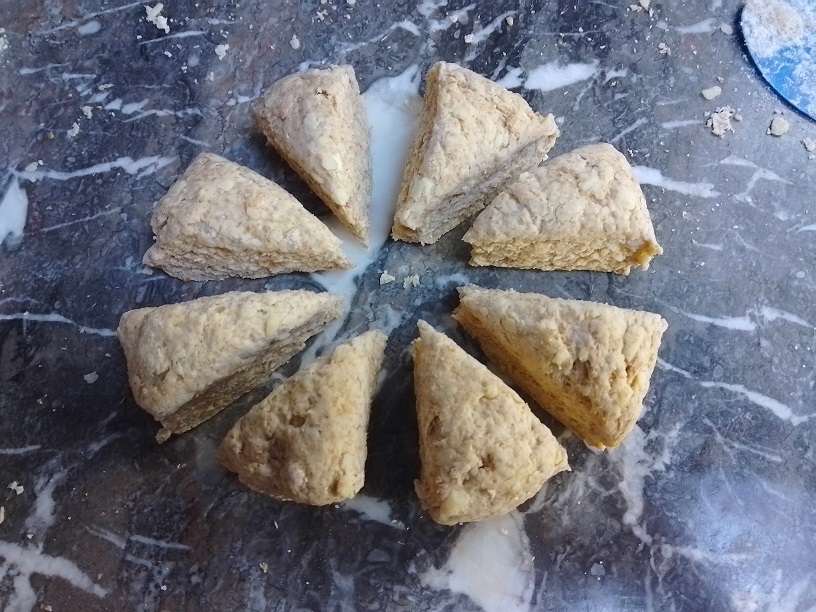
The dough does not need a vigorous knead—just the minimum necessary to have a coherent dough. You can cut the dough with a round cutter to have round scones, but for cheese scones, I prefer the triangle shape, which is easier anyway. I don't weigh them, I just cut the dough down the centre vertically, then again horizontally, then I cut each fourth in half.
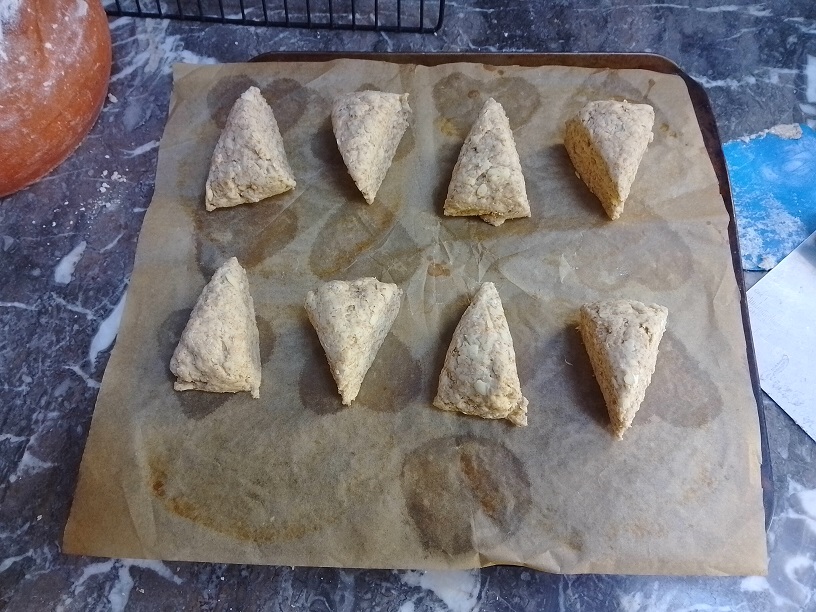
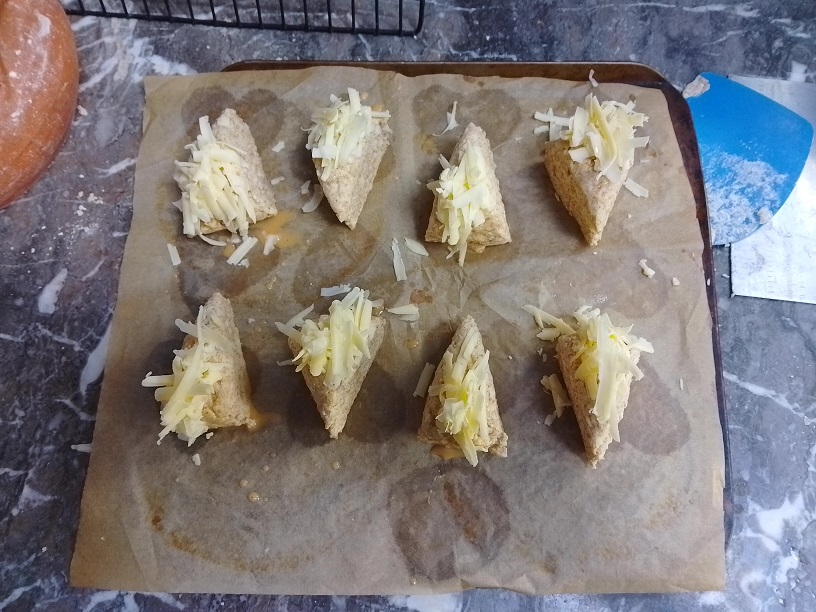
When applying the eggwash, try to avoid the egg dripping onto the straight sides of the dough (the sides where you cut them) as they will not rise straight otherwise.
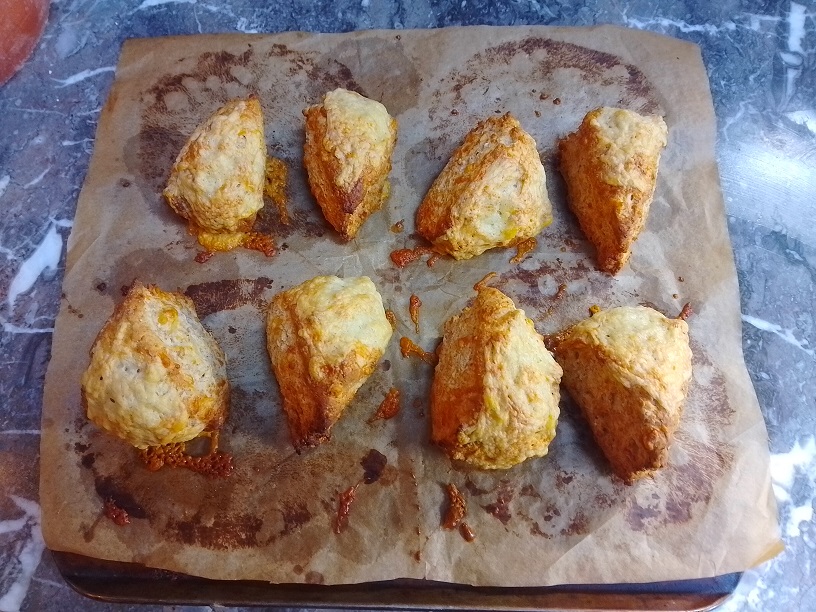
Sometimes I give them a second coat of egg wash and a second dollop of cheese (if I haven’t used all the cheese), usually after five minutes of cooking. I just take them out, brush the tops with some more egg, then add some more cheese quickly, before putting them back in the oven.

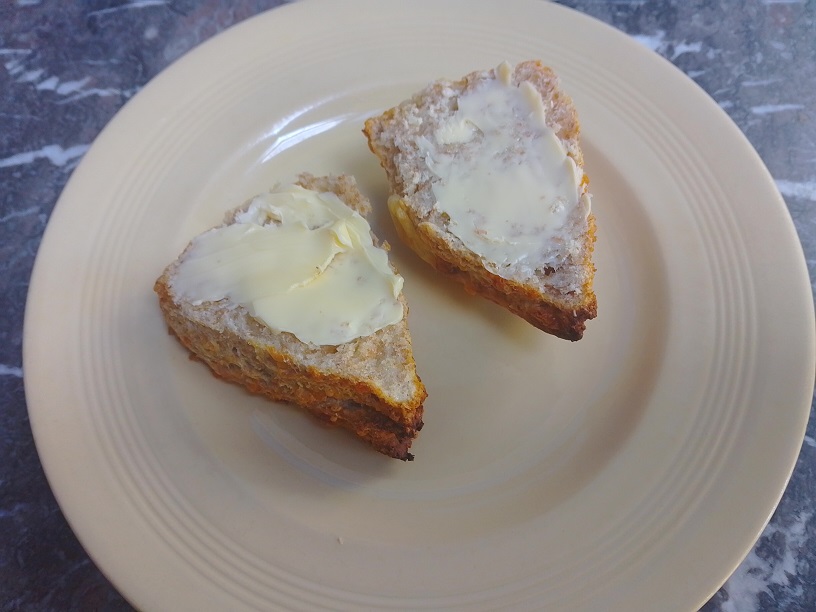
You can eat them hot or cold—I have them cold, split in half, and buttered, but you could have them with slices of cheese, or as an accompaniment to a soup.